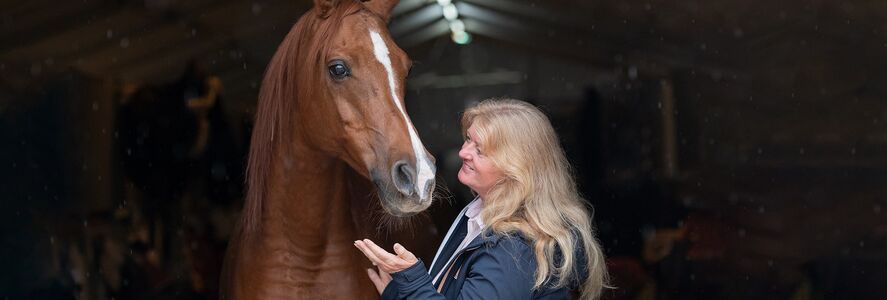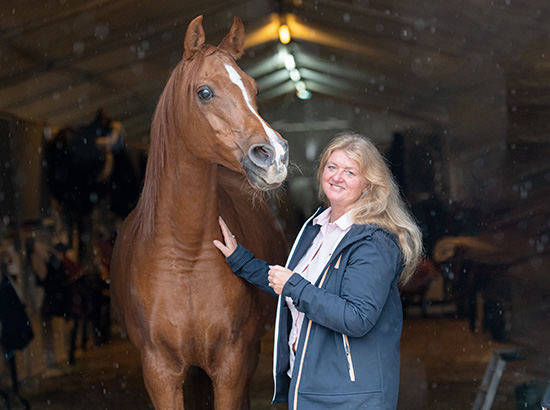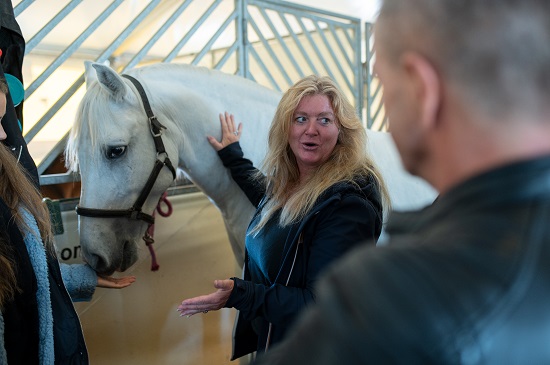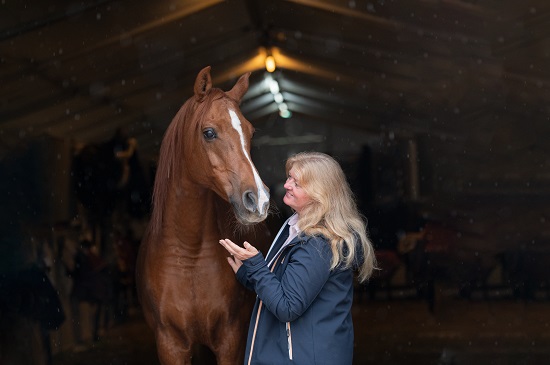
At CAVALLUNA, the care of the horses is a top priority. On the tour, Anita Förster - our person responsible for animal welfare - looks after the horses. She tells us more in this interview.

Where are you from and what do you do?
I'm from Graz in Austria and my job at CAVALLUNA is to make sure the horses are well. I send the registration form to the vets in each town so they know we are coming. When the official vets come to the tour cities, I show them the horses, the papers, the stables, the lorries, the vaccinations and everything else.
What exactly is your job title?
Paragraph eleven: Animal Welfare Officer.
How did you get this job at CAVALLUNA?
I was a huge fan of the show at the time - and still am, of course - and loved watching it. At some point I was asked if I could help out at the merchandise stand as someone was missing there. And then my current position became available and I took it.

Did you have any contact with horses before and if so, can you tell us a little bit about it?
I probably started like all children with riding lessons, riding holidays. In 1992 I bought my own four-sided farm. I educated, trained and bred horses myself, got my trainer's licence, trainer's C, competition successes up to M in jumping and ran my stable for 30 years. It still exists, there are still seven riders there.
And you still do that part-time?
Yes, I do that on the side. I'm a master farmer, so I run it as an agricultural business on the side. Of course not as intensively as before, with a lot of horses for the riding school and riding holidays with the children, as my main focus is now on the CAVALLUNA show.
Do you still ride actively?
Yes, but not as much as I used to with jumping and competitions. I used to do 15 to 20 shows a year. Now I'm more of a leisure rider.
What does a day here on tour look like for you?
After breakfast, I first go to the horses in the stable, have a look round, ask the riders if everything is OK and our stable attendant, who keeps an eye on things at night. Then I deal with my emails and receive the veterinary office, which is usually there until midday. The authorities need a lot of information, both on site and in advance. So there's always a lot of paperwork to do and send. In between, I always check that all the horses are well looked after. I also lead the stable tours that our visitors can book and take a look behind the scenes. In the evening, I take a final walk through the stables, inform the stable attendant if there is anything special that needs to be done and then go to bed.

Even show horses can get injured or fall ill - what happens then?
We call the vet immediately and if it turns out to be something serious, the horse stays in the box for a while. During the week all the horses are in a nice permanent stable anyway, where they can rest and relax in the paddock. If a horse is seriously injured, we either take one less horse on tour or a replacement horse from the team, depending on the role.
What about feeding? Do you have special feed for the horses? Do the riders bring their own feed?
We organise the feed for all the horses together. There are 54 horses at the moment and we have our own supply truck that brings the feed to the towns. We have two types of feed, a high protein feed for the horses that are very active in the show, like the trick riders, and a second feed with a little less protein for the horses that don't need as much energy. Each rider decides what to feed their horse. We get the hay from a special supplier and it is stored for the whole tour and taken to the show towns.
What does CAVALLUNA mean to you?
Passion for horses.